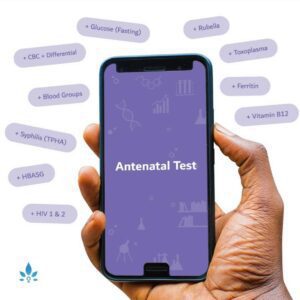Sleep Apnea in Kids: Recognising the Symptoms


Snoring is not unusual in children. As many as 10% of all children snore on a nightly basis, according to the National Sleep Foundation. Usually it is nothing to worry about, but when their snoring is very loud, or accompanied by gasping for air or short pauses in breathing, it could be a sign of sleep apnea. This condition causes your child to experience pauses in breathing while asleep.
Three sleep apnea types exist in children:
Obstructive Sleep Apnea (OSA). The most common of the three types. Typically occurs when something blocks a child’s airway, usually the tongue or soft palate at the back of the throat.
Central Sleep Apnea. This type is most common in premature infants whose immature brains may not adequately control breathing.
Mixed Sleep Apnea. This type is a combination of central sleep apnea and OSA. Children experience pauses in breathing whilst awake or asleep.
Who is at risk of developing sleep apnea?
Obesity can increase the risk of experiencing OSA by 4-5 times because added weight increases the amount of fat tissue in the neck area, which can obstruct the airway.
However, not all children with sleep apnea are overweight. Some children are born with an unusually shaped airway that results in sleep apnea. These children may be normal or even under weight. In fact, an estimated 1-3% of non-obese children below the age of 8 experience OSA, according to data from the Cumulative Index to Nursing and Allied Health Literature (CINAHL).
While adults can also experience sleep apnea, researchers from the CINAHL are not clear whether having OSA as a child increases the risk of having sleep apnea as an adult.
Symptoms of sleep apnea
Symptoms that could indicate your child is experiencing sleep apnea include:
- Audible pauses or gasps in breathing
- Being extremely hard to wake up
- Constant daytime sleepiness
- Excessive restlessness that causes your child to sleep in unusual, contorted positions
- Heavy sweating during sleep
- Loud snoring that occurs nightly or nearly every night
- A speaking voice that sounds nasal or a child that seems unable to breathe through their nose even while awake.
Sleep apnea symptoms should not be ignored because they can affect a child’s growth and school performance. Talk to your child’s paediatrician about his or her symptoms.
Managing sleep apnea
Your child’s paediatrician may recommend a sleep study, where your child’s breathing, brain waves, and heartbeat are monitored during sleep.
While many cases of childhood sleep apnea will resolve on their own, others may require interventions such as removing the tonsils or adenoids that obstruct breathing. A physician may also recommend your child wear an oral appliance that keeps the tongue from blocking his or her airway.
Sources:
- Caple, C, and T Schub, “Obstructive Sleep Apnea In Children.” (2012): CINAHL Plus with Full Text
- Obesity and Sleep.
National Sleep Foundation - Sleep Apnea & Children: Causes & Treatment.
National Sleep Foundation - Snoring in Children: Causes & Treatments.
Nemours Foundation.
Powered by Bundoo®











































